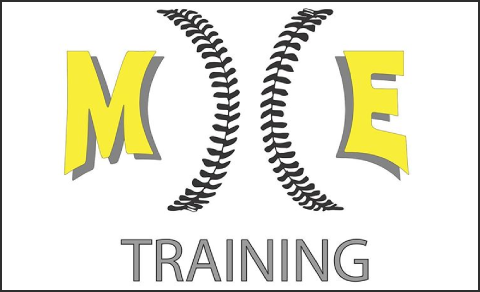https://www.youtube.com/watch?v=m5yVp_42nMk
Jarad Vollkommer, CSCS
If you’re a current player, coach, or baseball enthusiast like myself, you have heard the term “long toss”. This is a very loosely defined term since there are some arguments about classifying the distance.
So, what is “long toss” anyway?

Become a Black Diamond! Call 631-942-2542
Some professionals state that the distance equates to 120 feet, while others say it could be way past that. However, the actual distance should be based on your biological age, training age (both in the weight room and on the field), and your throwing mechanics.
In the recent literature, “long toss” reaches up to 180 feet and people seem to agree more on this distance than 120 feet. But again, we must think about your biological age, training age, and your throwing mechanics.
According to the authors of this study (Dr. Glenn Fleisig and others), long toss would require the thrower to generate greater force torque, range of motion, and speed than pitching would.

This would make sense since pitching from a mound already has a set distance. On the other hand, long toss can either be 90 feet, 120 feet, 180 feet, or whatever in between.
Based on these differences, something should change in the kinetic sequence to get the ball from point A to point B.
But should you throw on a line, or on an arc? Should you even try to reach maximal distance? There still is no clear-cut answer! No study has tried to find differences in mechanics between long toss and normal throwing from a mound (until this one).
Long toss may be used to increase a throwers arm strength, flexibility, speed, and velocity. Let’s find out if it does!
The purpose of this study was to investigate the differences in the throwing shoulder and elbow between pitching and various flat-ground distances.
 Results
Results
17 college baseball pitchers (approximately 21-years of age) participated in this study who were all familiar with a long toss program. Each participant was tested over two different testing sessions. During each session, reflective markers were placed on multiple areas on the body to measure a ton of metrics.
Each participant was tested with 5 throws at 120 feet, 5 throws at 180 feet, and 5 throws at maximum distance (with no constraint on trajectory). Mean values were used for each distance.
When the front foot contacted the ground for the maximum distance throw, the angle between the forearm and the bicep and the amount of rotation in the throwing shoulder were greater than the other throws.
As the throwing distance increased (from the mound to maximum long-toss distance), upper trunk tilt increased. Rather than throwing downhill like from the mound, long-toss actually leads to you throwing uphill.
If you look below, notice how I have a much more extended posture (like throwing uphill) in the picture on the right (max distance) compared to the left (120 feet).
NOTE: I am NOT a pitcher, so my mechanics aren’t up to par, but I think you can clearly see a difference!
For the maximum distance throw, as well as the 180-foot throw, the hip and upper trunk rotational velocities were greatest.
The longer throws also produced the greatest elbow and shoulder torques in the arm-cocked position (prior to ball release).
Interestingly, there were NO significant differences in ball velocity across all throw types!
Great, so what do these results actually tell us?
Simply put, as throwing distance increases, the thrower will use a greater upward trunk tilt and will rely on greater rotational velocity in the hips and upper trunk to get the ball from point A to point B.
Yes, your throwing mechanics do change once you throw for maximum distance and no, long toss will not result in you throwing harder. For a visual based on numbers, take a look at the tables below.


However, in Table 2, we can see that the participants in this study had a greater range of motion (shoulder external rotation), rotational velocity (hips and the upper trunk), and arm torque (elbow and shoulder internal rotation) when throwing for maximal distance.
Therefore, we can claim that long-toss can help increase your arm speed but not your arm strength. Having a good amount of arm speed is beneficial in throwing harder, don’t get me wrong!
Now, the next question is: at what cost? These players were already physically mature and had experience with long-toss. These players know their arm and know the intent that is needed to put behind the ball.
Going back to my previous statement in that long-toss is different for everyone, it doesn’t have to be 120- or 180-feet; it could be 90-100 feet for some individuals! If you want your arm to be “stronger”, get your butt in the weight room!
A player who is not physically mature will only further harm his throwing arm if he chooses to throw for a maximal distance.
Based on the results from this study, limiting your long-toss to 180 feet seems to be the most beneficial without increasing ball trajectory (throwing on an arc) and altering throwing mechanics.
Future research on multiple field positions (think about outfielders here), distances, and different trajectories are needed to fully understand the long toss.
If you are rehabbing from a throwing injury, flat-ground throwing can still promote proper throwing mechanics. Trying to long-toss too early in a rehab program can set you back! Your best bet is to stay away from throwing on an arc for maximum distance due to high elbow and shoulder torques.
However, whether you are coming off a shoulder/elbow injury or not, ramping up your throwing program during the off-season should be taken with a systematic approach.
To make things simple, you should start with increasing your effort from low-effort/low-intensity to high effort/high-intensity as you move through your program.
Indeed, long-toss is important for a developing player trying to condition the arm before the season starts. Take this with caution because you don’t want to add too much throwing volume before the season starts; this will only lead to your arm fatiguing a lot quicker.
In summary, you should only add long-toss (120-180 feet give or take) into your off-season progression if you show proper throwing mechanics and are physically mature.
Listen to your arm because YOU are the only one who knows it better than anyone else.
For another great read on long-toss, be sure to check out the one and only Mike Reinold (or click here for his simple video on long-toss).
Go long,
Jarad Vollkommer, CSCS

















